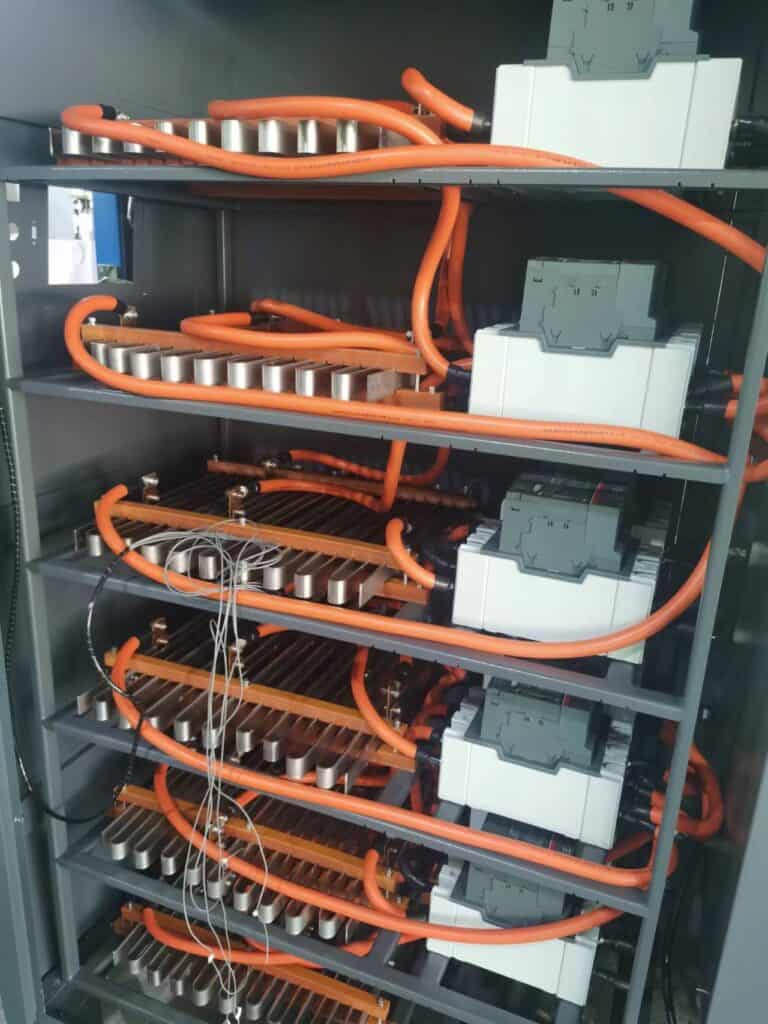Introduction
The electrification of the automotive industry has been one of the most significant technological shifts in recent years. Electric vehicles (EVs) are becoming increasingly popular due to their eco-friendliness, energy efficiency, and lower operational costs. However, one of the critical aspects that has been a focus of both manufacturers and regulators is battery safety performance. Ensuring the safety of electric vehicle batteries is paramount for the widespread adoption and acceptance of EVs. To achieve this, various testing equipment and methodologies have been developed to assess the safety of EV batteries. In this article, we will explore the commonly used testing equipment for electric vehicle battery safety performance.
1. Battery Testing Chambers
Battery testing chambers are designed to simulate extreme environmental conditions, such as high temperatures, low temperatures, and humidity, that an electric vehicle battery might encounter during its lifetime. These chambers help researchers and engineers assess how a battery performs under stress. By exposing batteries to these conditions, manufacturers can identify potential issues and develop strategies to mitigate them. Battery testing chambers play a vital role in ensuring that EVs are safe to operate in a wide range of climates and weather conditions.
We GAAT manufacture a wide range of explosion-proof environmental chambers, catering to the testing needs of temperature cycle, humidity, and thermal shock. In order to make most of the lab space of customer site, we have developed 3-zone and 4-zone independently controlled climatic chambers which allow customers to test different battery pieces under different environment conditions. Our unique energy-saving technology used in our system design can also enable our customers to be more eco-friendly and save on testing costs.

2. Thermal Imaging Cameras
Thermal imaging cameras are invaluable tools for assessing the thermal behavior of EV batteries. These cameras allow researchers to visualize and analyze temperature distribution within the battery pack. Overheating can lead to thermal runaway, which is a severe safety hazard. By monitoring and identifying hotspots within the battery, thermal imaging cameras help engineers design better cooling systems and thermal management strategies to prevent overheating and ensure the safety of the battery.
3. Battery Management Systems (BMS)
A Battery Management System (BMS) is an essential component of electric vehicle battery safety. While not a testing equipment per se, it plays a crucial role in monitoring and managing the state of charge, state of health, and temperature of individual battery cells within the pack. A well-designed BMS can detect abnormalities and trigger protective measures to prevent dangerous situations, such as overcharging, over-discharging, or thermal runaway. BMS technology continues to evolve, becoming more sophisticated and efficient in enhancing battery safety.
4. Impact Testing Machines
Safety in electric vehicles extends beyond normal operating conditions. Impact testing machines are used to simulate collisions and assess how well the battery pack can withstand external forces. This testing is essential to ensure that EV batteries do not pose a risk of fire or explosion in the event of an accident. Manufacturers use impact testing to design robust battery enclosures and develop materials that can absorb and dissipate impact energy safely.
We make battery nail penetration and crushing test chamber, battery drop tester, twisting force tester, together with integrated battery performance data acquisition system to our customers.

5. Battery Cycle Testers
Battery cycle testers are used to simulate the charging and discharging cycles that an electric vehicle battery undergoes throughout its life. These testers help evaluate how the battery’s capacity and performance degrade over time. By understanding a battery’s behavior under various usage scenarios, manufacturers can design batteries that have a longer lifespan and maintain safety and performance over time.
We make over-charging and discharging tester, thermal abuse and short circuit testers together with integrated battery performance data acquisition system to our customers.

6. Electrochemical Analyzers
Electrochemical analyzers are sophisticated devices used to study the electrochemical characteristics of battery materials and cells. Researchers use them to assess the performance of different battery chemistries and investigate potential safety risks. By gaining a deep understanding of the electrochemical processes within batteries, scientists can make informed decisions about materials and designs that enhance safety and performance.
Conclusion
Ensuring the safety performance of electric vehicle batteries is paramount for the continued growth and acceptance of electric vehicles. The commonly used testing equipment outlined in this article helps manufacturers and researchers assess and enhance battery safety in various ways, from simulating extreme conditions to monitoring thermal behavior, impact resistance, and electrochemical characteristics.
As the electric vehicle industry continues to evolve, so too will the testing equipment and methodologies. Ongoing research and development in battery safety testing are crucial to keeping pace with the rapid advancements in EV technology and ensuring the safety of these eco-friendly vehicles on our roads. With these testing tools at their disposal, manufacturers can innovate with confidence, knowing that safety remains a top priority in the world of electric mobility.


